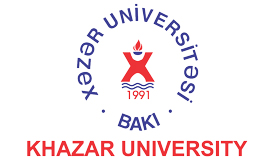International Conference on Materials Science and Research
November 16-18, 2017 Dubai, UAE
Tailor-Making Materials for 100-Nm Thin Inorganic Solar Cells
Professor, Department of Physics, University of Oslo, Norway and Department of Materials Science and Engineering, KTH Royal Institute of Technology, Sweden
Emerging Cu-based materials are explored to benefit from the energetically high-lying Cu d-state in combination with low effective mass of the minority carriers. Materials with higher functionality open for ultrathin devices and thereby less raw material usage. In this talk, we discuss the details in the optoelectronic properties of emerging Cu-based chalcogenides, like for instance Cu2(Sn,Ge)S3, Cu3Sb(S,Se)3, Cu3Bi(S,Se)3, and Cu2XSnS4 (X = transition metal atom), theoretically analyzed by employing hybrid functionals within the density functional theory. For example, we demonstrate that the band-gap energy Eg of CuSb(Se,Te)2 can be optimized for high energy conversion in ultrathin photovoltaic devices, and that the alloys then exhibit excellent optical properties, especially for tellurium rich CuSb(Se1-xTex)2. This is explained by multi-valley band structure with flat energy dispersions, mainly due to the localized character of the Sb/Bi p-like conduction band states. Still the effective electron mass is reasonable small for CuSbTe2. The absorption coefficient α(ω) for CuSb(Se1-xTex)2 is at ħω = Eg + 1 eV as much as 5∇7 times larger than α(ω) for traditional thin-film absorber materials. Auger recombination does limit the efficiency if the carrier concentration becomes too high, and this effect needs to be suppressed. However with high absorptivity, the alloys can be utilized for extremely thin inorganic solar cells with the maximum efficiency ηmax ≈ 25% even for film thicknesses d ≈ 50∇150 nm, and the efficiency increases to ~30% if the Auger effect is diminished. The results help to understand fundamental physics of the Cu-based compounds in order to design and optimize very thin solar-energy devices. References: Persson J. Appl. Phys. 107, 053710 (2010); Chen et al., J. Appl. Phys. 112, 103708 (2012); Crovetto, et al., Sol. Energy Mat. Sol. Cells 154, 121 (2016).
Biography:
Clas Persson, graduated in materials science at Linköping University in 1999. Post doctorate at National Renewable Energy Laboratory, USA, thereafter assistant professor 2004 at KTH Royal Institute of Technology, Stockholm. Since 2011, professor at Department of Physics, University of Oslo in Norway and at the same time, since 2007, associate professor at KTH. His research involves first-principles atomistic modeling of semiconductors for clean energy technologies, and also code development for analyzing materials. He has over 200 publications as collaborative works together with more than 250 researchers at 90 research groups world-wide, and he has supervised twenty post doctors and research students.


